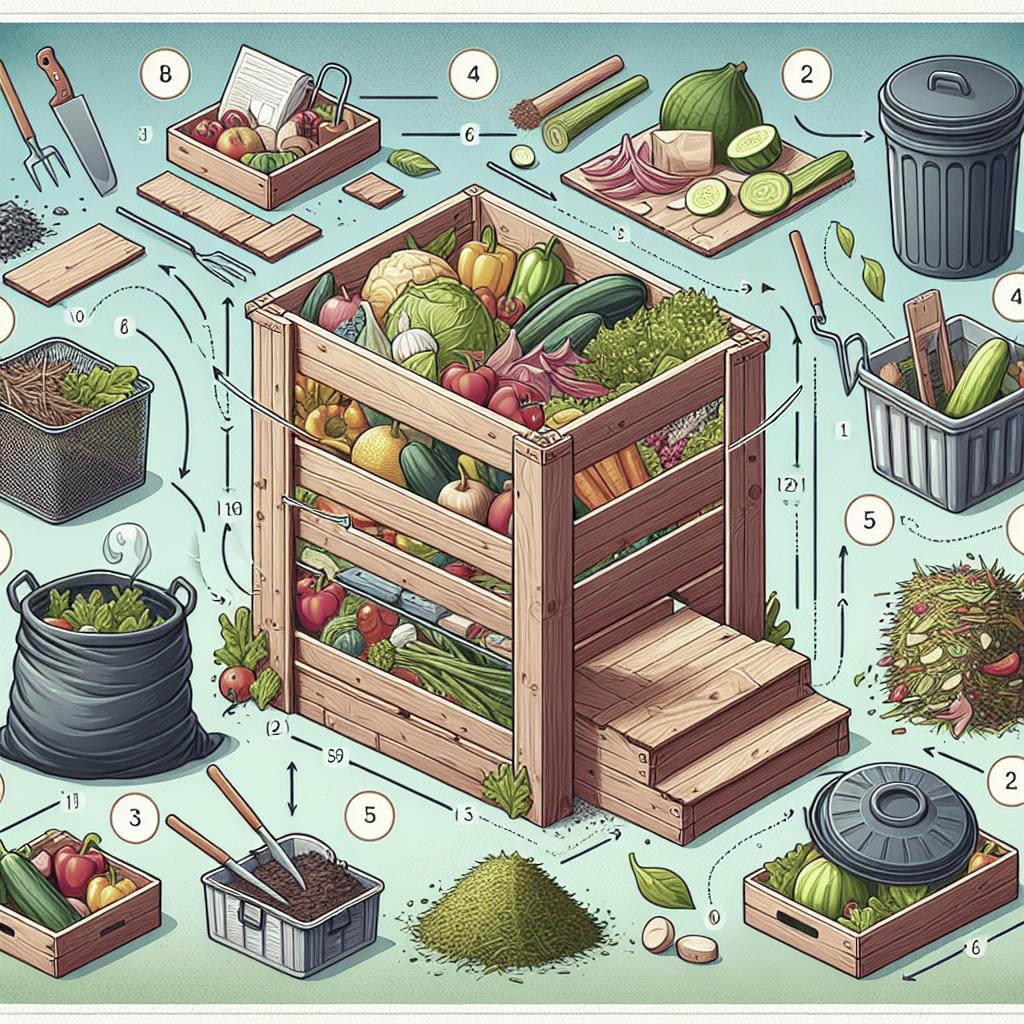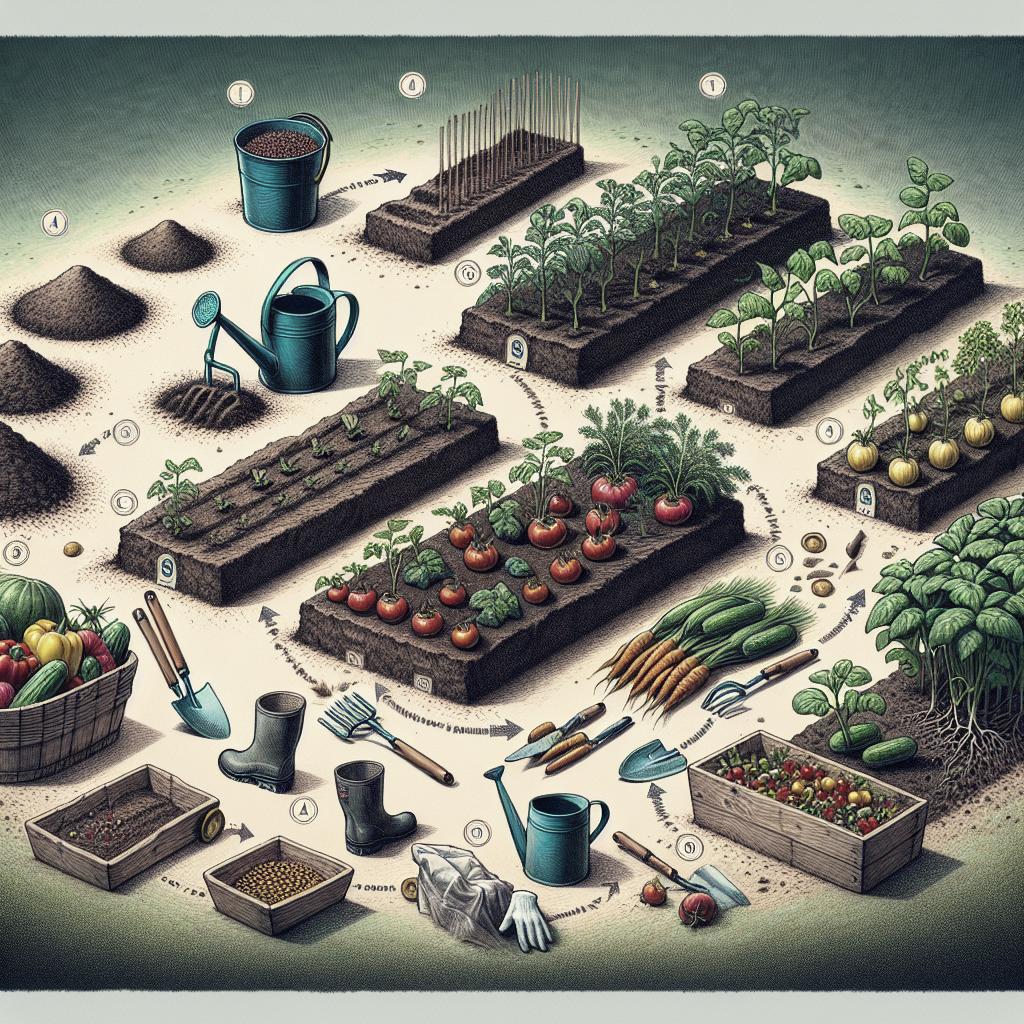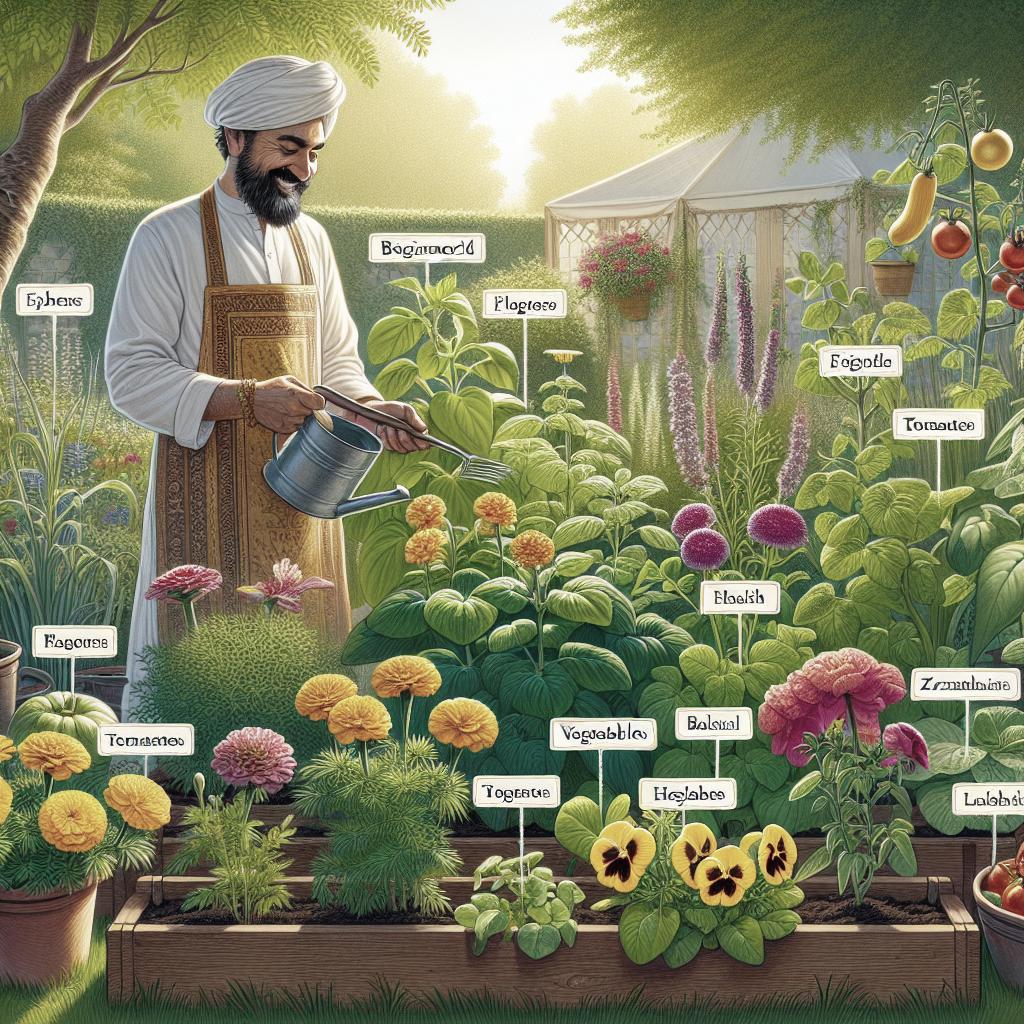“`html
How to Build a Compost Bin
Creating a compost bin is a rewarding way to recycle organic waste and enhance your gardening practices. This guide will explore six different methods for building compost bins, including simple heaps, wire bins, and more complex three-bin systems. Whether you have a spacious garden or a compact backyard, these options offer flexibility to suit various needs and preferences. Additionally, the guide includes a summary table highlighting the key features of each compost bin type and addresses frequently asked questions to help you get started on your compost journey.
6 Ways to Build a Compost Bin
1: The Compost Heap
The simplest method of building a compost bin is to create a compost heap. This traditional technique does not require any structures or containers; instead, you pile your organic waste directly on the ground. This method allows for good air circulation and is free-form, making it easy to adjust the size as needed. However, it might require occasional turning to speed up the decomposition process.
One of the main advantages of the compost heap is its flexibility—you can start small and expand as your composting needs grow. While it may not offer the tidiest appearance, positioning your heap in a discreet area of your garden can make it work. Adequate moisture levels and a good mix of green and brown materials are crucial for this method to work efficiently.
2: The Round Wire Compost Bin
The round wire compost bin is an excellent middle ground for gardeners looking for some containment. Made from galvanized wire fencing, it encircles the compost materials while allowing for ample airflow. The materials are easy to assemble, typically requiring wire cutters and pliers. This simple design can be moved around your garden without much hassle.
A wire compost bin helps eliminate some of the aesthetic and space concerns associated with open heaps. As the bin can be taken down and reassembled elsewhere, it suits gardeners who need to rotate or repurpose space quickly. It’s vital to ensure that the compost stays moist and is layered correctly to accelerate the decomposition.
3: The Worm Compost Bin
For those with limited outdoor space, a worm compost bin might be the perfect solution. This method uses worms, specifically red wigglers, to convert kitchen scraps into high-quality compost. The worm bin can be kept indoors or on balconies, making it suitable for urban dwellers or those with small gardens.
Building a worm compost bin involves creating a dark, ventilated container filled with bedding material such as shredded newspaper. Within this environment, worms actively digest organic waste, producing compost and a nutritious liquid known as worm tea. It’s important to maintain optimal conditions like temperature and moisture to keep the worms healthy and the composting process efficient.
The next two types of compost bins are variations of the same design: The Three-Bin Turning Unit.
4: The Wood-and-Wire Three-Bin Turning Unit
The wood-and-wire three-bin turning unit is an advanced system ideal for serious gardeners. This design consists of three connected bins that allow for batch composting. Initially, fresh materials are added to the first bin and gradually moved to the subsequent bins as decomposition progresses, making it easier to manage larger volumes of compost.
Constructing this type of bin requires basic carpentry skills and materials like wood planks, metal hinges, and wire mesh. The multi-bin system enables efficient turning and aeration, speeding up the composting process. It’s perfect for those who need continuous compost production for a larger garden or small farm.
5: The Pallet Three-Bin Turning Unit
An eco-friendly and budget-conscious variation of the three-bin system involves using wooden pallets. This approach repurposes old shipping pallets to construct the bin structure. Like the wood-and-wire unit, it supports batch composting and efficient aeration.
Pallets are placed vertically to create the walls of each bin, secured together with nails or screws. This approach is not only economical but also offers a rustic charm to the garden environment. As with all composting systems, understanding the balance of greens and browns is essential to accelerate the decomposition in this setup.
6: Build a Compost Heap in a Day
If you are in a hurry and need a quick solution, you can build a compost heap in a day. This approach involves quickly preparing a layer of coarse organic materials followed by alternating layers of green and brown materials. The objective is to establish an environment that heats up quickly and sustains decomposition efficiently.
The “in a day” method is suitable for gardeners who need to manage waste promptly without much concern for structure or aesthetics. It’s crucial to monitor the heap, keeping it moist and aerated, to ensure effective breakdown. Regular turning of the pile enhances the composting process, resulting in usable compost within a short period.
Summary: Building a Compost Bin
| Bin Type | Description | Best Used For |
|---|---|---|
| Compost Heap | A free-form pile of organic waste located on the ground. | Flexible and large space areas |
| Round Wire Compost Bin | Enclosure made from wire fencing for reducing mess. | Gardeners needing a simple yet contained bin |
| Worm Compost Bin | An indoor composting solution using worms. | Urban settings and small spaces |
| Wood-and-Wire Three-Bin Turning Unit | A sturdy three-bin system for efficient decomposition. | Large gardens needing continuous compost |
| Pallet Three-Bin Turning Unit | A simple, budget-friendly three-bin setup using pallets. | Eco-conscious individuals with large compost needs |
| Compost Heap in a Day | A quickly assembled pile that speeds up decomposition. | Immediate waste management needs |
5 FAQs about Building a Compost Bin
1. What materials can I compost?
Compostable materials include fruit and vegetable scraps, coffee grounds, eggshells, grass clippings, and leaves. Avoid composting meat, dairy, and oily foods as these can attract pests.
2. How often should I turn my compost?
Turning your compost every 1-2 weeks is typically recommended to introduce air and speed up the decomposition process. However, this can vary based on the method you use.
3. Can I compost in winter?
Yes, you can compost in winter, although the process may slow down due to lower temperatures. Insulating your bin or covering it with a tarp can help maintain some warmth.
4. How do I know when my compost is ready?
Finished compost is dark, crumbly, and smells earthy. The original materials should no longer be recognizable, and the compost should be ready in 2 to 6 months, depending on conditions.
5. Do I need to add water to my compost?
Moisture is essential for composting, so it’s important to keep your pile damp but not soaked. Depending on your environment, you might need to add water occasionally to maintain the right balance.
Related Articles:
- A Beginner’s Guide to Composting: Tips and Tricks
- Innovative Composting Techniques for Small Spaces
- The Science Behind Composting: How it Works
- Maintaining a Balanced Compost Pile: The Do’s and Don’ts
“`


